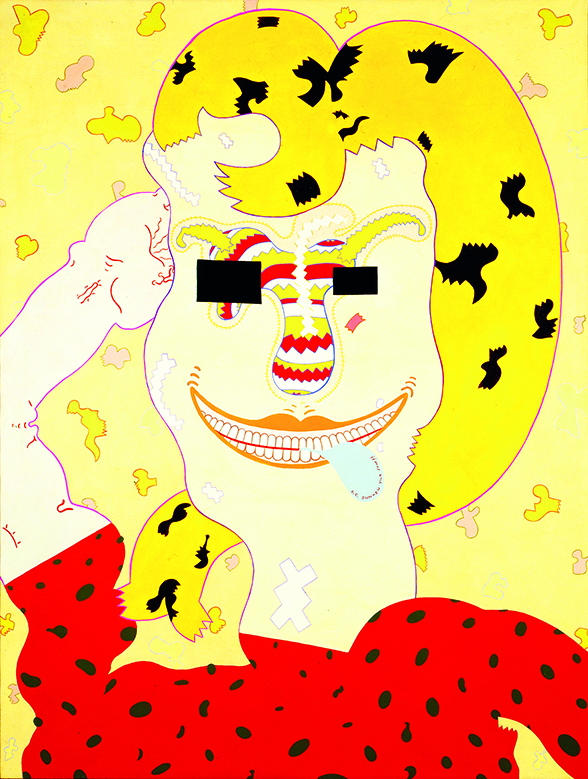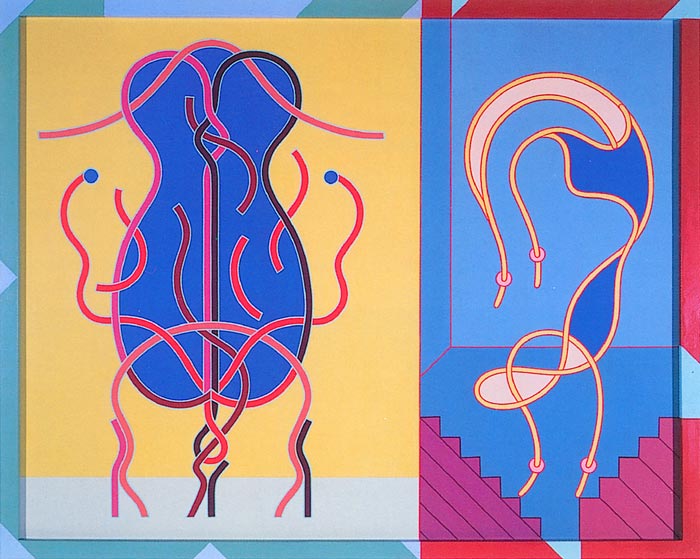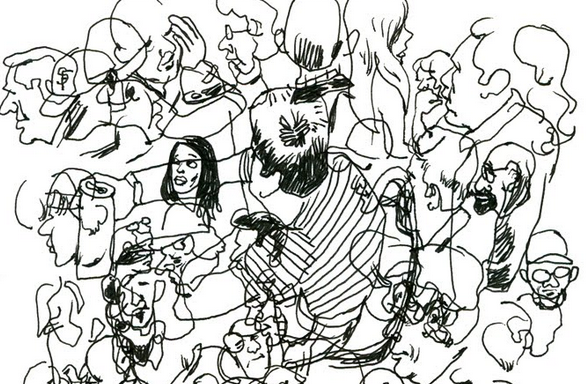“Artificial, sexual, bizarre situations, sex organs everywhere, of all kinds, are being pointed at, outlined, sprouting out of places.” This is how Brooklyn-based artist Amy Sillman describes the work of the Chicago Imagists in the documentary Hairy Who and the Chicago Imagists. Work produced by the Imagists bristled with raw life, inspired by comic books, freak shows, found ephemera, and Chicago Jazz. The Imagists are a less talked about movement that happened concurrently with the pop and psychedelic art that came out of the New York art scene during the 1960’s.
The Imagists combine the highly imaginative and fantastical realm of the surrealists, with the thick lines, bright colors and exaggerated mannerisms of modernism, and throw in a bit of 1960’s whimsical psychedelia.
“Our work may have been an alternative to what was going on in New York but it wasn’t done with the intension of being an alternative,” says artist Jim Nutt.
Their work wasn’t afraid to confront the darker aspects of sexuality and psychosis, which made it less marketable than the pop art of Andy Warhol, Roy Lichtenstein, or David Hockney. Nonetheless, the Imagists went on to have an impact on the art world inspiring artists in future generations including Jeff Koons and Chris Ware.

During the 1960’s, there were few outlets for younger more experimental artists to show their work in Chicago. Thus, the Imagists essentially made their own scene by exhibiting at the Hyde Park Art Center, turning the center into a radical arts incubator along with the help of it’s exuberant curator Don Baum.
The core gang of Imagists included Jim Nutt, Jim Falconer, Suellen Rocca, Art Green, Gladys Nillson, and Karl Wirsum – a group who exhibited together under the moniker The Hairy Who. Although there was no unified aesthetic or philosophy that could be easily fit all the Chicago Imagists, their wild style, focus on the subconscious, and anti-authoritarian exuberance united them. Jim Nutt created smooth surfaces depicting multifaceted and perverse monsters, while Gladys Nilson executed whimsical and intricate watercolors creating the sensation of movement through overlapping figures.
Although underrated, the Imagists are ultimately an influential and fascinating marker of a specific moment in art that could only exist during the historically complex and environmentally oppressive times of Chi-town. To learn more about them, check out the documentary Hairy Who and the Chicago Imagists, or visit their website, an exploration of the people, places and ideas that can be strung together to create a comprehensive understanding of the Imagists.













